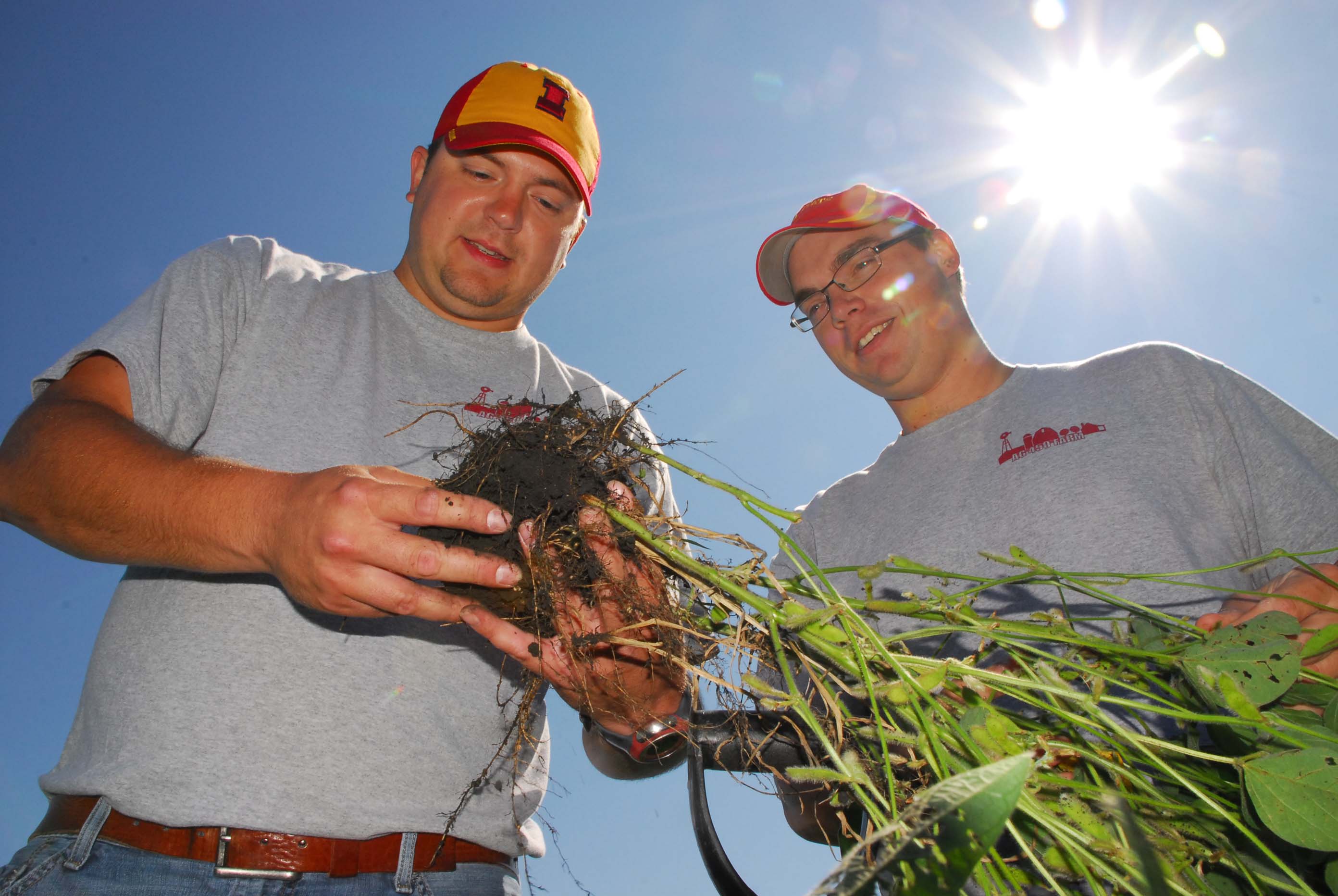
Growing Successful Managers
Wet springs, planting delays and bad weather as well as high yields, good prices and great markets are all part of the business of food production. Dealing with those ups and downs is a challenge Iowa State University students have experienced firsthand since 1943.
Today, that hands-on learning approach has expanded and students can choose between managing a conventional corn and soybean operation or a horticultural enterprise.
Bill Murray, an agriculture economics professor, developed the Agriculture Education and Studies 450 Farm Management and Operation class in 1943. The concept was simple—teach hands-on farm management by putting students in charge of an actual farm.
The concept was backed by the philosophy that the farm had to support itself. Louis Thompson, the farm’s instructor in the 1950s, and later an associate dean, emphasized the importance of letting students run the farm without financial support. In a 1983 interview he stated, “If we can’t teach farmers to make money, we have no business teaching farm management.”
The 450 Farm has grown into a successful program that allows students to make choices, while facing the same challenges other producers juggle. Throughout its 68 years students have raised corn, soybeans, chickens, dairy cows, sheep, beef cattle and hogs. Each class maintains detailed records, daily logs and recommendations for future classes.
“This collaborative approach allows students to use problem-solving, decisionmaking, critical thinking and communication skills,” says Tom Paulsen, assistant professor in agricultural education and studies. “This is a capstone course designed to provide an opportunity to manage a real farm operation.”
Jesse Deardorff, a senior, and Chad Krull, a junior, both agricultural studies students volunteered to finish up some business for the 450 Farm after the class ended last spring. The two drove four hours at 30 miles per hour in the sweltering July heat to pick up a soybean harvesting head. They wanted to make sure the next class was ready for harvest. Both say the class provided practical management experience they couldn’t have gotten elsewhere.
“The class gives you an idea of what happens from bottom to top, as far as grain production,” Deardorff says. “If you didn’t have any idea how the process works, you would have after taking this class. It’s also about learning farm management, which is different than farm operations.”
During that same heat wave, Kyler Sheets and Joe Jacobs spent a couple of days thinning onion seedlings. The two mstudents were part of the first summer 465 Horticulture Enterprise Management course, which began in the spring of 2011. The new course was based on the same idea as the Ag 450 Farm.
During the spring session students wrote a business plan and decided what to plant, grow and harvest. Members of the summer session, Jacobs and Sheets, worked on implementing the plan.
“This class is modeled after the Ag 450 Farm, but the challenges, especially for marketing and labor, are completely different,” says Jacobs, a senior in horticulture.
In July, the students hosted a tour at the All Horticulture Field Day to share what they learned. Attendees listened while Jacobs and Sheets talked about successes and obstacles they encountered planting tomatoes, potatoes, watermelon and onions on the one-acre plot located on the Iowa State Horticulture Station north of Ames.
One recommendation for future classes, “don’t plant onion seeds. It’s labor intensive and costly,” says Jacobs.
Along with onions, the first horticulture 465 class planted tomatoes, potatoes and watermelons. Sheets, a senior in horticulture, says the class is an opportunity for students to apply what they learned in previous classes.
“I’ve never farmed before. I’ve raised a few tomato plants, but not 1,000,” Sheets says.
The class is in the business of raising food, says Malcolm Robertson, the instructor and program coordinator with the Leopold Center for Sustainable Agriculture. The idea, he says, is to let students make business decisions and solve problems.
“This course is focused on the direct marketing of local foods, which is essentially relationship marketing and meeting the needs of customers,” Robertson says.
The class supplied locally grown food to Iowa State University Dining Services, grocery stores and restaurants, while the Ag 450 farm class decided how to sell commodities that could be used to feed livestock. This fall both classes focused on harvesting, marketing and beginning plans for the 2012 planting season.
Click here for Krull’s scalloped pineapple recipe, Paulsen’s butterscotch squares recipe, Deardorff’s roasted corn salsa recipe, and Robertson’s Boerewors sausage recipe.



